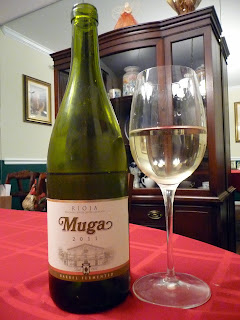One of my favorite comics and cartoons growing up was Peanuts and Charlie Brown. I especially remember It's the Great Pumpkin, Charlie Brown, which introduced everyone to the Great Pumpkin. Well, not formally, anyways. Every Halloween, Linus van Pelt would wait in the pumpkin patch for the Great Pumpkin. The problem was that the Great Pumpkin never materialized and, in the end, Linus was ridiculed by all of his friends for standing in the pumpkin patch all night while they were trick-or-treating and celebrating the holiday at parties.
Linus is confined to realm of non-fiction, which is unfortunate given the Great Pumpkin exists in reality. The brewers at Heavy Seas have produced The Great Pumpkin, which is brewed in the style of an imperial pumpkin ale. They have also produced the Greater'er Pumpkin, which is the imperial pumpkin ale aged in barrels from Virginia's A. Smith Bowman Distillery. I found a bottle of the Great'er Pumpkin and saved it for Halloween.
The Great'er Pumpkin pours a nice orange in color, with a thin level of foam. The aromatic elements of suggest pumpkin puree, cinnamon and a little clove. The aging of the beer for three weeks in bourbon barrels also contributes to the aroma of the beer, with hints of the bourbon itself.
When it comes to the flavor of the beer, the Great'er Pumpkin is like a liquid pumpkin pie that has been made with bourbon. There are flavors of nutmeg, cinnamon, clove and allspice. The brewers also note these flavors, along with their use of dark brown sugar, which added color and some dryness to their spicy, malt-forward ale. All of these flavors are wrapped in a boozy cover, which is clearly drawn from the A. Smith Bowman Distillery barrels. The aging of this beer in the bourbon barrels definitely sets this beer apart from other Imperial Pumpkin Ales that I have tried in the past.
The Great'er Pumpkin is best enjoyed alone, sipping the beer as a digestif. You could also enjoy the beer like I did, waiting to give away our candy to the trick-or-treaters before I break down and eat that candy myself.
I found this beer at State Line Liquors in Elkton, Maryland. It sold for about $6.29 or $6.99 a bottle.
HAPPY HALLOWEEN!

































